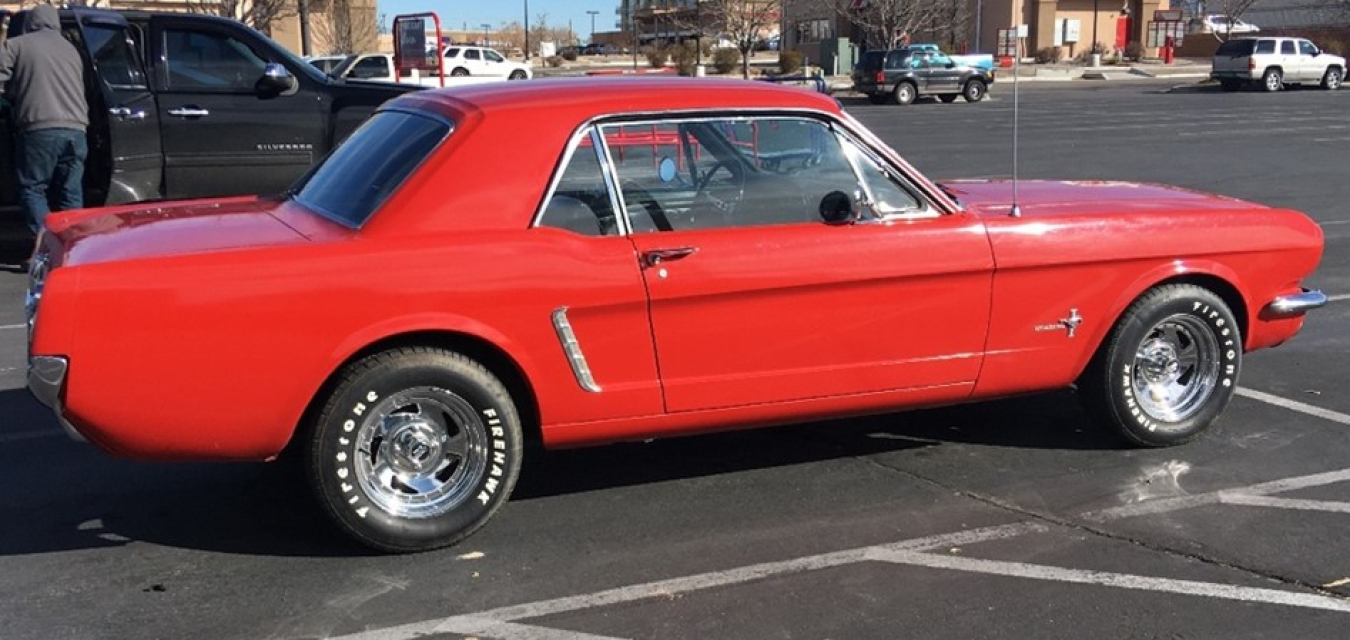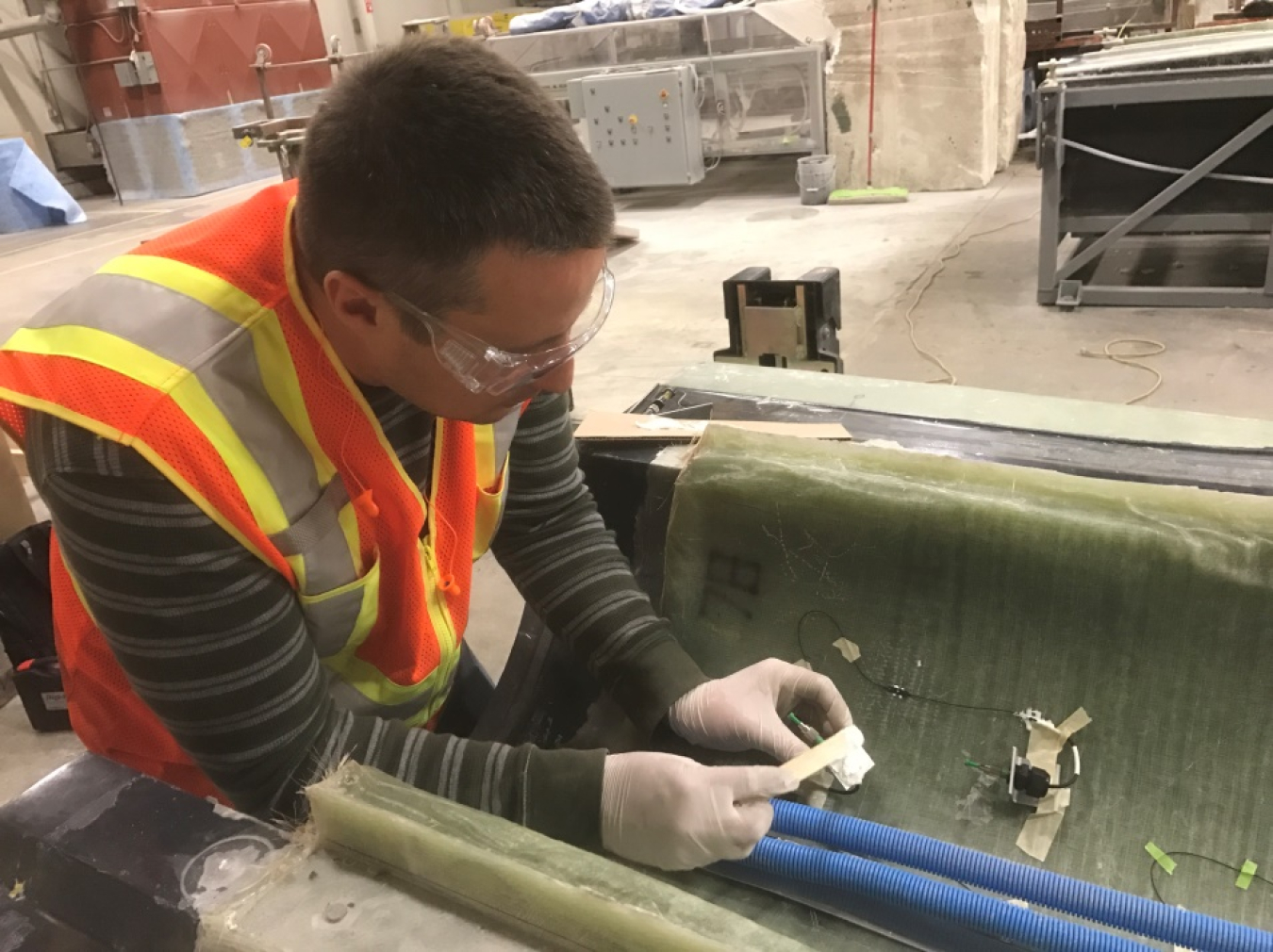While studying mechanical engineering at the University of Texas in Austin, Paquette became interested in structural components and composite materials. Although he originally planned to pursue work in the aerospace industry, he jumped at the opportunity to work at Sandia on wind turbine blades—the largest composite structures in the world.
Wind Energy Technologies Office
May 20, 2024Josh Paquette rebuilt his first car engine in middle school. His father, an amateur car collector, always had vehicles around the house “in various states of restoration.” So, at the age of 13, when the younger Paquette was given the opportunity to rebuild the engine of a 1965 Ford Mustang—and test his engineering mettle—he jumped on it. He’s also proud to say he drove to high school in that Mustang and still owns it to this day.
These days, Paquette pours most of his curiosity and problem-solving skills into his work in wind energy—namely, figuring out how to make wind turbine blades more reliable and identify potential issues before they happen.
“I’ve always been interested in mechanical things,” said Paquette, a researcher at Sandia National Laboratories (Sandia). “I asked a lot of questions as a kid, and finally my parents got me a book called How Things Work. I read it cover to cover and started explaining to them how things like lasers worked.”

Paquette’s first big mechanical project was this 1965 Ford Mustang, which he still drives.
While studying mechanical engineering at the University of Texas in Austin, Paquette became interested in structural components and composite materials. Although he originally planned to pursue work in the aerospace industry, he jumped at the opportunity to work at Sandia on wind turbine blades—the largest composite structures in the world.
“I thought it was a nice challenge,” said Paquette. “Wind turbine blades have this added challenge that aerospace doesn’t have, which is that wind energy has to be cost-competitive with other sources of energy generation. I think this challenge has attracted a lot of engineers to work in the field.”
Paquette shared his 19-year journey at Sandia, why wind energy has held his interest for so long, and how his current projects are helping to shape the future of the field.
Tell us about your current projects and why they’re important in the broader scheme of wind energy.
One of my roles is to be the convener (or leader) of the International Electrotechnical Commission 61400-5 blade design standard. For the last eight years, I’ve been able to work with researchers and people in the wind energy industry from all over the world to define standards for how wind turbine blades are designed, manufactured, and operated. It’s a way to take all the learnings from research and distill them down into something that makes a real difference in the industry.
I generally split the rest of my time between two projects, one of which is a joint project between Sandia and the National Renewable Energy Laboratory called the Big Adaptive Rotor Project. The goal of that project is to look at what rotor designs will look like in the future and identify any gaps in our knowledge of how to design them. Then, we try to solve those problems before the industry reaches that point.
My other work is on a blade durability and damage tolerance project, which was born out of the Blade Reliability Collaborative. The overall goal of the project is to improve the reliability of wind turbine blades—but more specifically to identify ways to design blades that account for manufacturing flaws and what they will endure when operating in the field.
So, what does your day-to-day job look like?
My job has both analytical and experimental components. Typically, the goal of the experiments is to validate models using a fairly broad set of problems, since we have to look at problems that come from both the manufacturing process and environmental factors such as lightning or erosion caused by rain.
For example, I’ve done experiments where we exposed wind blade materials to simulated lightning and then looked at the effect that those lightning strikes had on the strength and durability of the materials.

How do you simulate lightning in a lab? And what do you do with your results?
We have a facility called the Sandia Lightning Simulator that can mimic full-sized lightning strikes on large structures.
The next step is to analyze the effects of manufacturing flaws or weather events on the wind turbine blade materials’ strength and fatigue resistance. Then we ask questions like “How would you find the flaw in an inspection? And if you do find it, what are the repair techniques that you might use to mitigate that damage?” In some cases, perhaps you can’t find the damage—and you just have to implement other safety factors to compensate for it. In other cases, you can find the damage, monitor it, and make sure that it doesn’t grow to an extent that’s dangerous for the machine or the component. And in other cases, when it needs immediate repair, the focus is on how you make a repair that is reliable and doesn’t cause more problems. Our goal is to help the industry answer all of these questions as they emerge.
Can you tell us more about what drew you to this work?
The challenge of making wind energy cost-competitive makes it a fun topic to work on, but it’s also nice to be able to solve a problem related to climate change, energy security, and energy independence in the United States.
I also appreciate that I’m surrounded by bright, hardworking people who are passionate about science and engineering. At Sandia you can find an expert in almost any area to help you out. Sandia’s breadth of technical expertise and how many great people I’ve been able to find to help me solve new problems with is amazing.
Are there any accomplishments you’re particularly proud of in your career?
The work that we’ve done at Sandia—as I think it should be for a national lab—is forward-looking. We’re trying to anticipate future problems that the industry might face.
I’ve also been fortunate to get to work on projects like floating vertical axis wind turbines. We’ve been able to map out opportunities and get the ball rolling on that technology. But it’s always difficult to tell whether or not things that you work on are going to see commercialization in the future—because if you’re doing your job right, you’re working on things that are high-risk and far-out in terms of timelines. You have to be comfortable with that sort of uncertainty.
Given that uncertainty, do you have an idea of what your work in wind energy will look like in five years?
The industry is always evolving. As wind turbines get bigger and more get deployed, you have to start thinking about other effects that wind energy potentially has—how wind energy interacts with the environment, the grid, and communities, and what happens to wind turbines when they reach the end of their useful life. Those factors are all just as important as the mechanical ones that I’m working on. I’m also really interested in researching manufacturing methods that increase quality, allow more components to be built in the United States, and open up opportunities for recycling and reuse.
On that note, do you have any advice for younger people interested in wind energy?
Stay curious, read about things outside of what you do, and try to make connections between other people’s work and your own. And don’t be shy—most people love to tell you about what they’re working on and are excited when someone asks.

